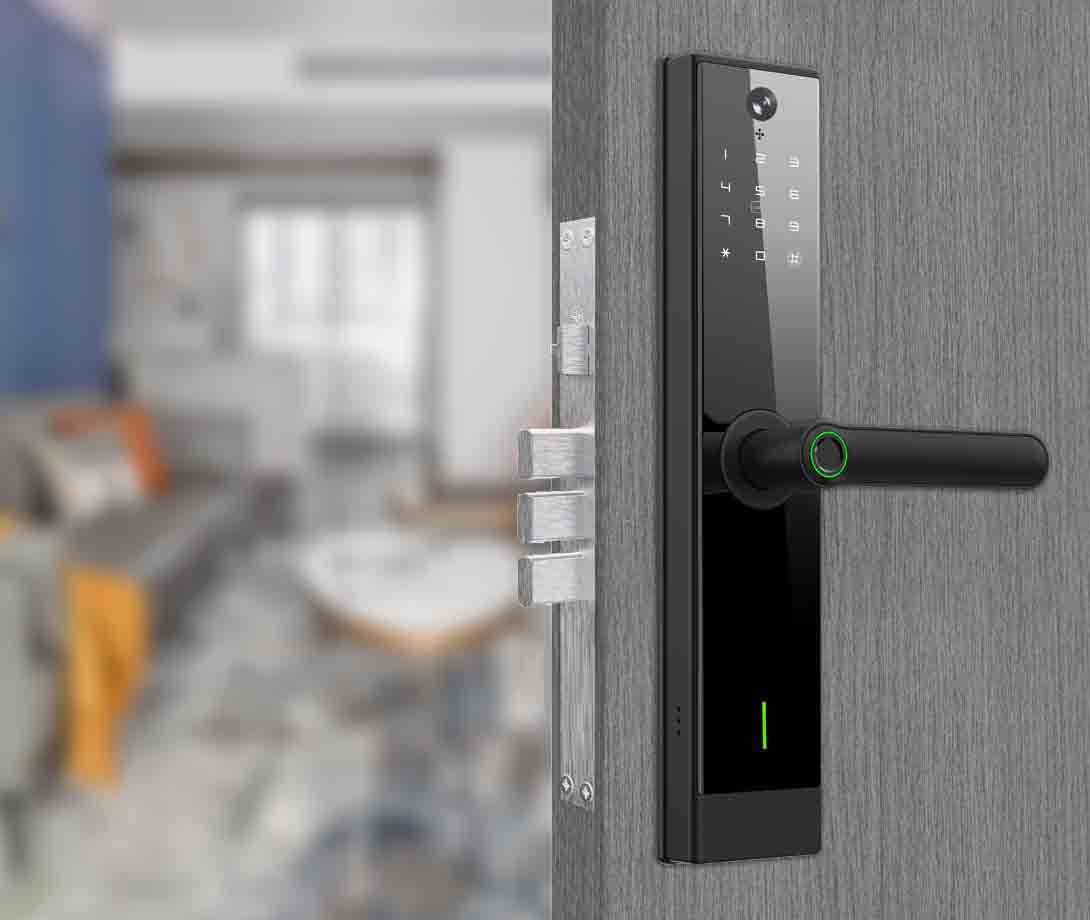Is a biometric lock safe?
Forget fumbling with keys or worrying about stolen access codes. Biometric locks promise unparalleled convenience and futuristic security—unlocking with your fingerprint, face, or palm. But as these devices proliferate, a critical question emerges: Can you truly trust your biology to guard your home? The answer requires navigating a complex mix of cutting-edge innovation and sobering vulnerabilities.
The Allure: Why Biometrics Feel Secure
Biometric locks leverage unique physical traits, theoretically offering advantages over traditional keys or codes:
- Uniqueness: Fingerprint ridges, facial contours, or vein patterns are extremely difficult to replicate exactly, reducing risks from lost keys or guessed PINs.
- Convenience: No memorization or physical items needed; access is tied to your body.
- Advanced Features: Modern systems combine multiple biometric methods (e.g., 3D facial recognition + palm vein scanning) to counter spoofing. AI algorithms can adapt to minor changes like aging or injuries.
The Hidden Risks: Where Biometrics Can Fail
Despite their promise, biometric systems face four critical challenges:
- Spoofing & Forgery
- Fingerprints: Silicone molds, high-resolution photos, or even lifted latent prints can deceive optical sensors. While semiconductor sensors (used in higher-end locks) are more resistant, they’re not foolproof.
- Facial Recognition: Masks, deepfake videos, or 3D-printed heads can bypass basic 2D cameras. New standards now mandate defenses against photos, videos, and AI-synthesized images.
- Industry Response: Leading locks now integrate liveness detection (e.g., blinking, micro-movements) and multimodal systems (e.g., face + palm veins) to verify human presence.
- Cybersecurity Nightmares
Internet-connected biometric locks introduce alarming digital risks:- Data Breaches: In 2024, researchers found 24 vulnerabilities in biometric access systems, including SQL injections (CVE-2023-3938) allowing hackers to steal fingerprint data or add unauthorized users to databases.
- Remote Hijacking: Flaws like CVE-2023-3943 granted attackers full control over devices, enabling backdoor installation or physical access manipulation.
- Weak Encryption: Many budget locks lack AES-256 encryption or two-factor authentication, leaving data transmissions exposed.
- Physical & Environmental Limitations
- Weather Impact: Rain, extreme cold, or dirt can disrupt fingerprint scanners. IP65+ weatherproofing is essential for outdoor use.
- Battery Dependency: Dead batteries can lock you out. Reputable locks include emergency power ports (e.g., 9V battery backups) or physical key overrides.
- Tampering: Attackers may physically damage sensors or exploit mechanical overrides. Anti-drill plates, reinforced bolts, and tamper alarms mitigate this9.
- Privacy & Data Abuse
Biometric data (unlike passwords) is permanent. If compromised:- Irreversible Exposure: You can’t “reset” your fingerprints.
- Cloud Storage Risks: Locks storing data on servers risk mass breaches. Opt for models with local storage encryption.
- Regulatory Gaps: Standards like China’s 2025 Smart Lock Cybersecurity Specification now mandate strict biometric protections, but global norms remain fragmented.
The Safeguards: How to Choose a Truly Secure Lock
Minimize risks by prioritizing these features:
- Multimodal Biometrics: Choose locks combining ≥2 methods (e.g., fingerprint + vein scanning).
- Anti-Spoofing Tech: Ensure liveness detection, 3D structural light (for faces), and scrambling keypads.
- Security Certifications: Look for ANSI/BHMA Grade 1 (highest durability) or T/CAQI287-2022 compliance (biometric safety).
- Offline Operation: Disable Wi-Fi if remote access isn’t essential. Use Bluetooth instead7.
- Regular Updates: Firmware patches fix vulnerabilities. Avoid brands without update histories.
The Verdict: Convenience ≠ Infallibility
Biometric locks can be secure—if engineered rigorously. However:
- For High-Risk Homes: Pair biometrics with mechanical deadbolts and alarm systems.
- For Tech-Cautious Users: Opt for hybrid locks offering biometric + PIN + physical key access59.
- Never Compromise on Basics: Battery backups, anti-tamper bolts, and encryption are non-negotiable.
Conclusion: Trust, But Verify
Biometric locks represent a leap forward in access control but demand informed scrutiny. As cybersecurity expert Bruce Schneier warns: “Security is a process, not a product.” By selecting locks with hardened encryption, multimodal verification, and proven physical defenses, you harness convenience without sacrificing safety. In the evolving landscape of home security, vigilance remains your ultimate lock.
Post time: Jun-27-2025


